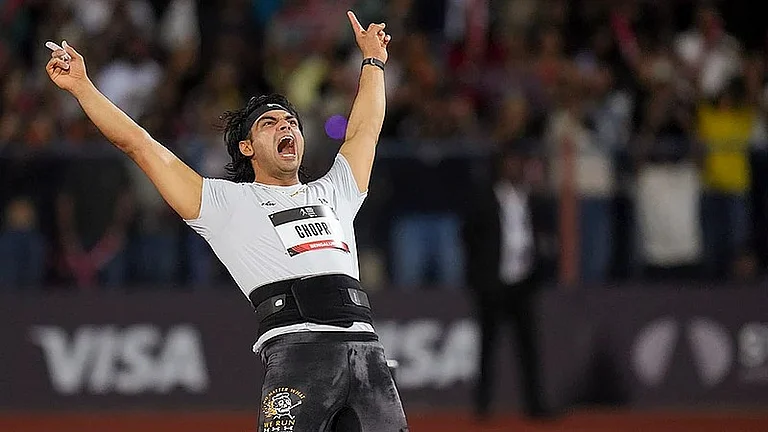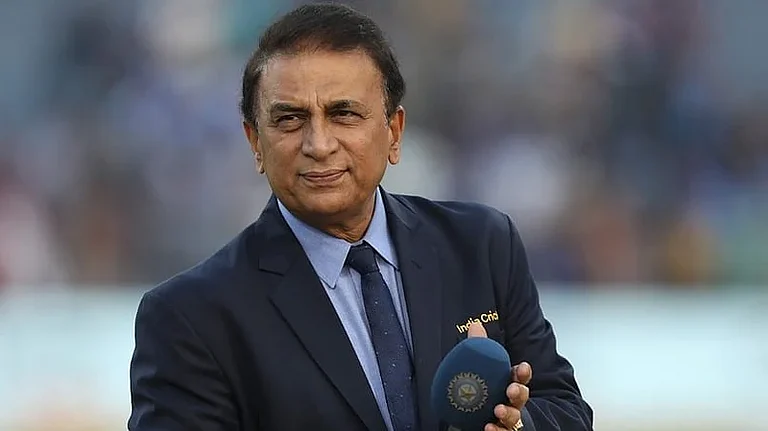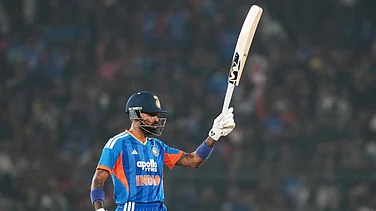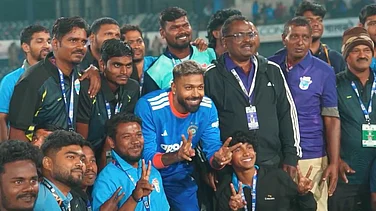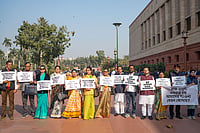
Jemimah Rodrigues, Harmanpreet Kaur architect India's astounding semi-final win
Triumph has potential to spur cultural shift for women's sport in country
Forward the only way for women's cricket, with growing popularity and financial sustenance
In a scene straight out of a Bollywood script, India's women cricketers delivered their own cinematic climax at the ICC Women's World Cup 2025 by defeating defending champions and heavy favourites Australia. It's a veritable 'Chak De!' moment for women's cricket, played out not so far from the grand Bollywood settings in Mumbai.
At the DY Patil Stadium in Navi Mumbai on Thursday, Jemimah Rodrigues' unbeaten 127 and captain Harmanpreet Kaur's 89 helped India eclipse Australia's 338, the highest-ever successful run chase in women's ODI history. The five-wicket win sets up a final date with South Africa, to be played at the same venue on Sunday, November 2.
India's semi-final victory against the record seven-time World champions was more than just a win. It will be remembered as a significant event in India's sporting history, even a cultural crescendo, echoing the spirit of the Shah Rukh Khan-starrer 'Chak De! India'.
Chak De, Eighteen Years Hence
That movie, inspired by real-life coach Mir Ranjan Negi's Commonwealth Games 2002 gold-winning exploits, became a rallying cry for women's sport in India. An underdog Indian women's hockey team defied odds to conquer the world, capped off by a final victory against Australia via a penalty shoot-out. This India vs Australia narrative is unmissable, rather interestingly.
Eighteen years after the movie's critically acclaimed and commercially successful release, life imitated art, as they say. For those who had savoured every frame of that celluloid classic and then witnessed Indian women rewrite history in real time, the parallels would be unmissable. Cinematic fantasy turned into a sporting reality!
'Chak De!' showed the systemic neglect women athletes faced in the country back in 2007. Fast forward to 2025, and Indian women's cricket is no longer in the shadows. The journey from playing in near-empty stadiums to packed venues like DY Patil is a testament to this transformation.
Winding Road To Recognition
It's also a fact that this journey has been long and layered, with countless hurdles along the way. For decades, despite the Board of Control for Cricket in India (BCCI)'s unrivalled growth as a sporting body, women's cricket in India existed in obscurity — underfunded, and more worryingly, underappreciated.
It was only in 2006 that the BCCI formally recognised women's cricket when the Women's Cricket Association of India merged with it. Now, it's safe to say that the tide has turned.
The launch of the Women's Premier League (WPL) in 2023 also proved as a game-changer. It replicated the uber-successful Indian Premier League (IPL), the men's version, albeit in a less glamorous fashion, but brought visibility and a new generation of fans, who are ready to invest their time and money into the women's game.
Stars like Smriti Mandhana, Harmanpreet, Jemimah, Shafali Verma, Deepti Sharma and Renuka Singh became household names, while international icons such as Ellyse Perry, Sophie Devine, Marizanne Kapp, Meg Lanning and Nat Sciver-Brunt brought international flair, giving a whole new meaning to Indian women's cricket. WPL has already elevated the women's game.
Elsewhere in Australia, multiple players have breached the threshold of USD 1 million annual earnings, and with the next WPL auction in November, the group is likely to expand. The Aussies, of course, remain the most sought-after foreign players in both WPL and IPL.
South Africa's own journey to the ODI World Cup final, led by Laura Wolvaardt, reflects this trend. The Proteas have played back-to-back Women's T20 World Cup finals, and they are now on the cusp of winning a first global trophy, emulating the success of their male counterparts, current holders of the ICC World Test Championship mace. This reflects the growing depth and competitiveness of the women's game, and that it is not limited to the traditional centres.
For women's cricket to truly thrive, India must lead from the front, as evidently seen in the men's game — not merely as a financial powerhouse, but as a consistent contender for global titles.
"The pace at which women's cricket is growing in India is unbelievable... Girls have started playing on the streets with boys, which you never used to see happen. They want to be a Jemimah Rodrigues or a Deepti Sharma," former IPL player Abhishek Jhunjhunwala told BBC Test Match Special.
"It is a proper career now for women. If India go on to win this World Cup, this will change women's cricket. The game is growing rapidly worldwide but in a commercial aspect, this will change drastically."
Remember The Titans
This is also a time to honour legends like Mithali Raj, India's highest run-scorer; Jhulan Goswami, the workhorse who led the bowling attack for two decades; Anjum Chopra, the charismatic captain who led the team long before the limelight found the women's game, and others.
Today, in various roles — as mentors, commentators, administrators, scouts, etc. — they continue to serve the sport they inherited from the pioneers like Shantha Rangaswamy, Diana Edulji, Fowzieh Khalili, and others. It was their collective will and perseverance that laid the foundation for this era.
India's rise also mirrors the global growth in women's cricket. The wider recognition from the International Cricket Council (ICC), reserving World Cup cycles for both ODI and T20I formats, the launch of franchise-based domestic leagues in Australia, England, Pakistan and the Caribbean, etc., have all helped create a vibrant ecosystem.
Broadcast deals, sponsorships, and record-breaking crowds signal a sport in full bloom. For example, the T20I World Cup 2020 final between Australia and India witnessed the Melbourne Cricket Ground filled to the brim with a record 86,174 people in attendance. Other iconic venues have also seen encouraging turnouts.
The Coach Effect
If Kabir Khan was the fictional architect, Amol Muzumdar is the real-world tactician. Appointed head coach of the women's cricket team in 2023, Muzumdar arrived without fanfare. But the domestic giant with two decades of playing experience, and having already coached teams in junior setups, brought a vision to transform the team from also-rans to title challengers.
And so far, he has managed to translate that into results. He is one game away from becoming an Indian World Cup-winning coach, a feat previously achieved only by PR Man Singh (manager), Lalchand Rajput, and Rahul Dravid.
Under Muzumdar, India's women have evolved as world beaters. The team's recent performances, especially against Australia, the most dominant side in cricket history, are not only commendable but also signal where the team is heading. He's nurtured a team that wants to play a fearless brand of cricket, which was on full display in the semi-final.
He has not only given young stars like Pratika Rawal, Richa Ghosh, Kranti Gaud, Sree Charani, etc., freedom to play without fear, but also brought players from fringe regions into the national reckoning.
In 'Chak De! India,' Kabir Khan famously said, "Mujhe states ke naam na sunai dete hain, na dikhai dete hain... sirf ek mulk ka naam sunai deta hai — India," as the fictional team prepared to take on the world. Today, Muzumdar's dynamic squad is doing just that — reshaping the narrative with every outing. And the world is taking notice.
Let's go! India.








